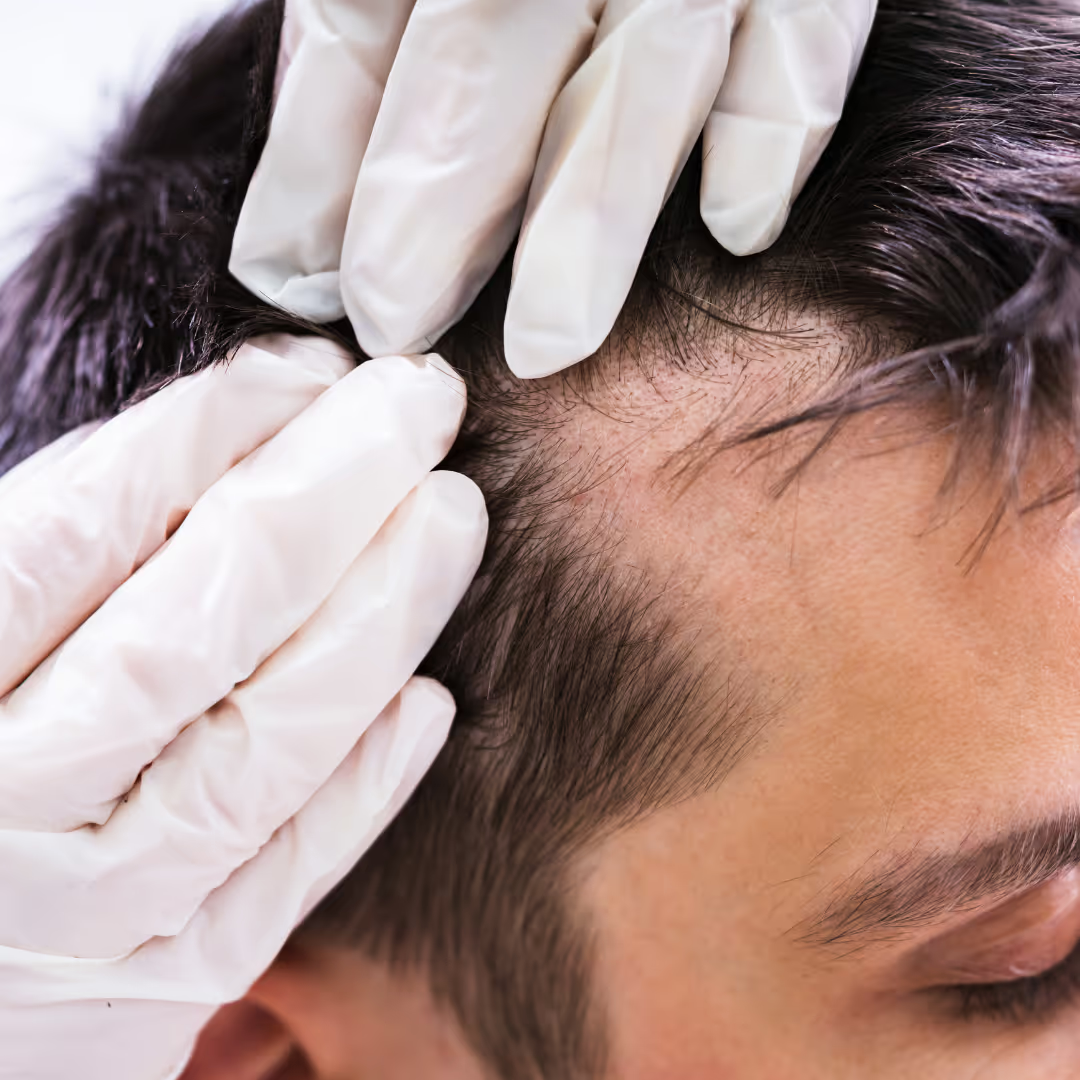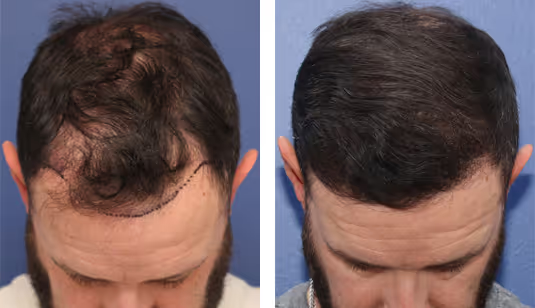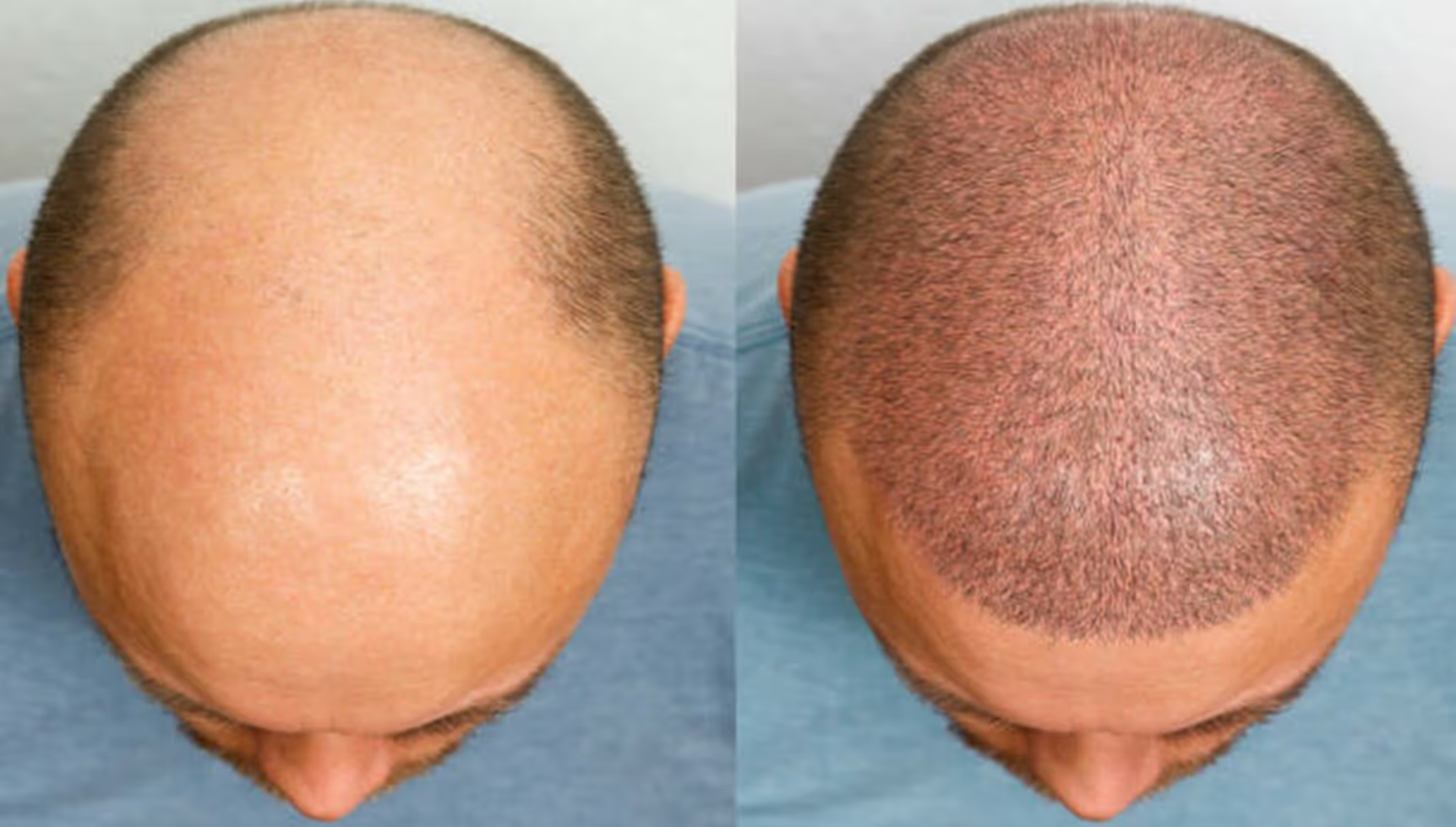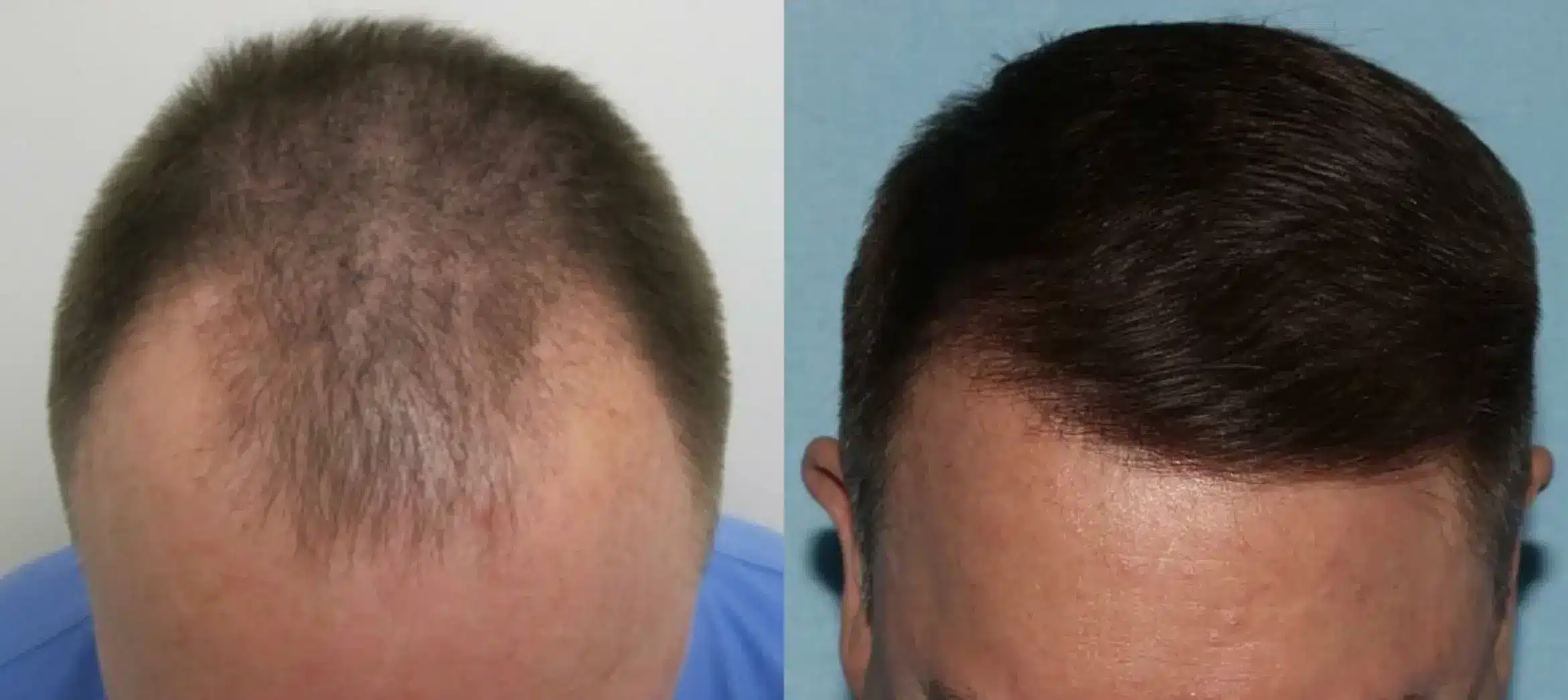Top-Rated Hair Transplant For Men in Toronto
Noticing thinning hair or a receding hairline? Dr. Cory Goldberg offers advanced male hair transplants using SmartGraft technology to restore natural fullness. This technique blends new hair seamlessly with your own, providing a lasting solution that looks and feels just like you!
Get up to 10% off your hair restoration treatment
You deserve this!
By submitting this form you consent to receiving communications from Laserbody MD including email, text messages and phone calls. You may withdraw your consent at any time.

What You Can Expect From Male Hair Transplant
Thinking about a hair transplant? You’re not alone—an average of 84.2% of men worldwide opt for hair transplants to address hair loss. At our clinic, you’re in skilled hands with Dr. Cory Goldberg, a board-certified plastic surgeon recognized by the Royal College of Physicians and Surgeons of Canada. Dr. Goldberg combines his expertise with SmartGraft technology, an advanced, minimally invasive solution designed for precision and natural results.
With SmartGraft, you’ll experience minimal downtime and a natural-looking outcome that blends seamlessly with your existing hair. From your first consultation to follow-ups, Dr. Goldberg and our team are here to help you confidently restore your hair.

What Causes Male Hair Loss?
Male hair loss is a common concern, often influenced by multiple factors that impact hair health over time:
- Genetics: Androgenetic alopecia, the most common form of hair loss, affects over 80% of men, with at least 50% experiencing it by age 50. This inherited condition makes hair follicles highly sensitive to hormones like DHT, leading to gradual thinning.
- Hormonal Changes: Shifts in hormone levels, especially DHT, can shrink follicles, contributing to hair loss as men age.
- Stress: High-stress levels may trigger temporary shedding conditions like telogen effluvium.
- Dietary Deficiencies: Lack of essential vitamins and minerals weakens hair health.
- Medical Conditions and Medications: Certain illnesses and treatments can disrupt natural hair growth.

What Are the 7 Stages of Male Hair Loss?
Hair loss in men often progresses in predictable stages, commonly tracked by the Hamilton-Norwood Scale. Here’s a breakdown to help you understand each phase and what it means for treatment options:
- Stage 1: Minimal or no visible hair loss—your hairline is intact.
- Stage 2: Early signs of recession begin, usually forming a slight “M” shape at the temples. Hair loss may still be minor, but it’s the first noticeable stage.
- Stage 3: The recession becomes more pronounced, with thinning at the temples or crown. This stage is where many men first consider hair restoration options.
- Stage 4: Hair loss is evident along the temples and crown, with noticeable thinning or even bald spots. The connection between the hairline and crown becomes more fragile.
- Stage 5: The balding areas on the crown and front start to connect, creating a larger bald area and forming an “island” of hair on the top.
- Stage 6: The bridge of hair connecting the sides and back begins to disappear. Hair density decreases across the top, leaving the hair along the sides and back.
- Stage 7: Advanced baldness, with hair only remaining around the sides and back in a horseshoe shape. At this stage, transplant options may require careful planning, as donor hair is more limited.
FUT, FUE, or PRP: Which Hair Restoration Option is Right for Men?
Choosing the right hair restoration technique depends on your goals and type of hair loss. Here’s a quick overview:
FUE (Follicular Unit Extraction): Ideal for men seeking minimal scarring and a quicker recovery, FUE involves removing individual follicles from the donor area. It’s popular for those looking for a natural look with minimal downtime.
FUT (Follicular Unit Transplantation): FUT, also known as the strip method, is best suited for men needing larger grafts. It allows for higher-density transplants in a single session but may leave a thin scar at the donor site.
PRP (Platelet-Rich Plasma): PRP isn’t a transplant method but a treatment that uses your blood’s growth factors to stimulate existing follicles. It’s great for men with early hair thinning or as a supplement to transplants for improved results.
The Benefits of Hair Transplant Treatment
Natural, Permanent Results
By using your own hair follicles, a transplant provides natural growth patterns and a realistic look that’s designed to last, blending seamlessly with existing hair.
Increased Confidence
Restoring hair density and a fuller hairline can significantly enhance self-esteem, making people feel more comfortable and confident in social and professional settings.
Low Maintenance
Unlike other hair restoration methods, transplanted hair requires minimal upkeep once it begins to grow, eliminating the need for ongoing special treatments or products.
Preparation of Male Hair Transplant
Avoid Blood Thinners: Two weeks before, consult your doctor about stopping any blood-thinning medications to reduce the risk of bleeding.
Stop Smoking: Refrain from smoking at least two weeks before the procedure, as it can impact healing.
Avoid Alcohol: One week before, avoid alcohol, which can thin the blood and interfere with the procedure.
Gentle Hair Care: Stop using harsh styling products a few days before the transplant, and wash your hair gently the day before.
Aftercare of Male Hair Transplant
First 48 Hours: Keep your head elevated, avoid touching the grafted area, and stay out of direct sunlight.
Gentle Washing: After three days, begin gently washing your hair as directed by your doctor, avoiding rubbing or scrubbing.
Avoid Strenuous Activities: To protect the grafts, avoid heavy lifting and intense exercise for the first two weeks.
Healing Phase: Expect some shedding within the first month, which is normal. Full growth generally appears within 6-12 months, with regular follow-up to monitor progress.
The Process of Hair Transplant Treatment
Step 1: During your initial consultation, we evaluate your hair loss pattern, determine the number of grafts required, and discuss your goals. This personalized approach ensures a treatment plan suited to your specific needs.
Step 2: Healthy hair follicles are extracted from the donor area (typically the back or sides of the scalp) using a precise technique. This process preserves follicle quality and minimizes scarring.
Step 3: Small incisions are made in thinning areas, carefully following your natural growth pattern to maintain a realistic appearance.
Step 4: Each follicle is implanted individually into the prepared sites, ensuring a smooth, natural-looking blend with your existing hair. This step is essential for achieving seamless results that grow naturally over time.
Before & After
98% CUSTOMER SATISFACTION


Customer Reviews
FAQ
The length of the procedure depends on the number of grafts needed. Typically, it ranges between 4-8 hours in a single session. Your surgeon will discuss expected timing during your initial consultation.
Local anesthesia ensures you feel minimal discomfort during the procedure. Some patients experience mild soreness or swelling afterward, which typically resolves within a few days.
Follow-up appointments are recommended to monitor progress, assess healing, and make any necessary adjustments to ensure the best results.
After a hair transplant, new hair growth usually begins at around 3-4 months, with noticeable thickness developing over time. By 9-12 months, you can expect to see the full, permanent results.
Transplanted hair follicles are resistant to the effects of DHT (the hormone often responsible for male pattern baldness), so they typically offer long-lasting, natural growth. However, some maintenance may be suggested depending on your overall hair loss pattern.


.avif)











